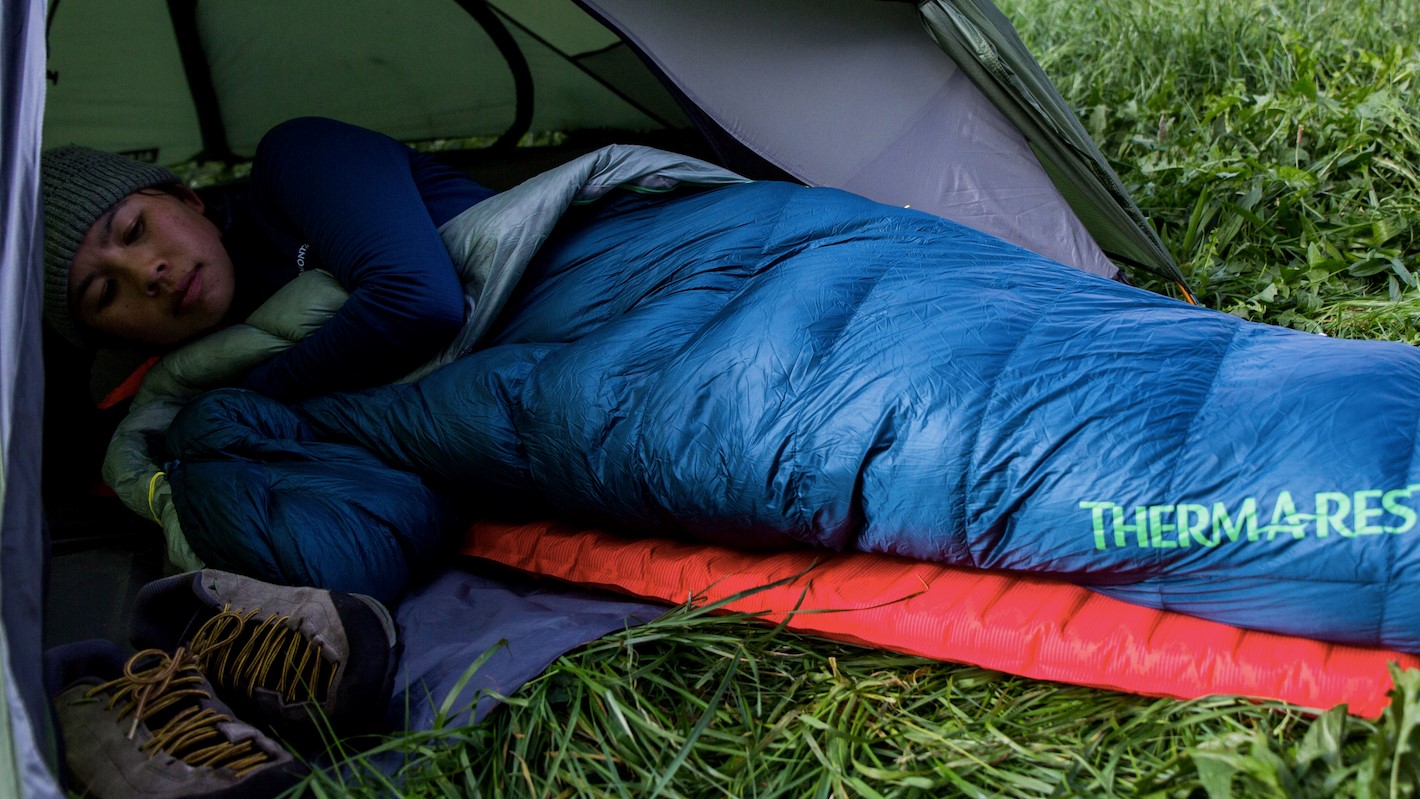
Therm-a-Rest Hyperion: first impressions
Designed to supply warmth for less carry weight, the high-performance Therm-a-Rest Hyperion 20F/-6C is one of the lightest and best sleeping bags around.
• List price: $469.95 (USD) / £399 (UK)
• Weight: Small: 550g / 19.4oz; Medium: 580g / 20.45oz; Large 630g / 22.2oz
• Length: Small: 185cm / 73in; Medium: 203cm / 80in; Large: 216cm / 85in
• Pack size: 15cm x 20cm / 6in x 8in
• Colors: Deep Pacific
• Comfort rating: 0°C / 32°F
• Limit rating: -6°C / 20°F
• Compatibility: Mountaineering, camping, thru-hiking
Using high-end materials, hydrophobic treated down and with an ergonomic design, this sleeping bag can keep you comfortable in conditions down to 0°C / 32°F. There are three different unisex sizing options, to accommodate all users, and with a tiny pack size, it really doesn’t take up much room. This makes it a sought-after sleeping bag for backpackers on thru-hikes as well as alpinists in search of a warm sleeping bag for fast and light mountain missions.
The 900 Fill Goose Hydrophobic Down (RDS) used in the Therm-a-Rest Hyperion has been Nikwax-treated to prevent moisture absorption, so the bag maintains loft 60 times longer than similar products that use untreated down.
The sleeping bag boasts high performance credentials thanks to its box baffle construction and ergonomic design, although levels of comfort are somewhat dependent on whether you’re a side or back sleeper. The Zoned Insulation, which distributes more fill to the top rather than the foot of the sleeping bag, won’t please everyone, but the design leans more towards those looking for a performance-led sleeping bag.
The Hyperion is compatible with SynergyLink Connectors, so it can be twinned with a Therm-a-Rest mattress for optimal efficiency and comfort, and to stop the sleeping bag from sliding around.
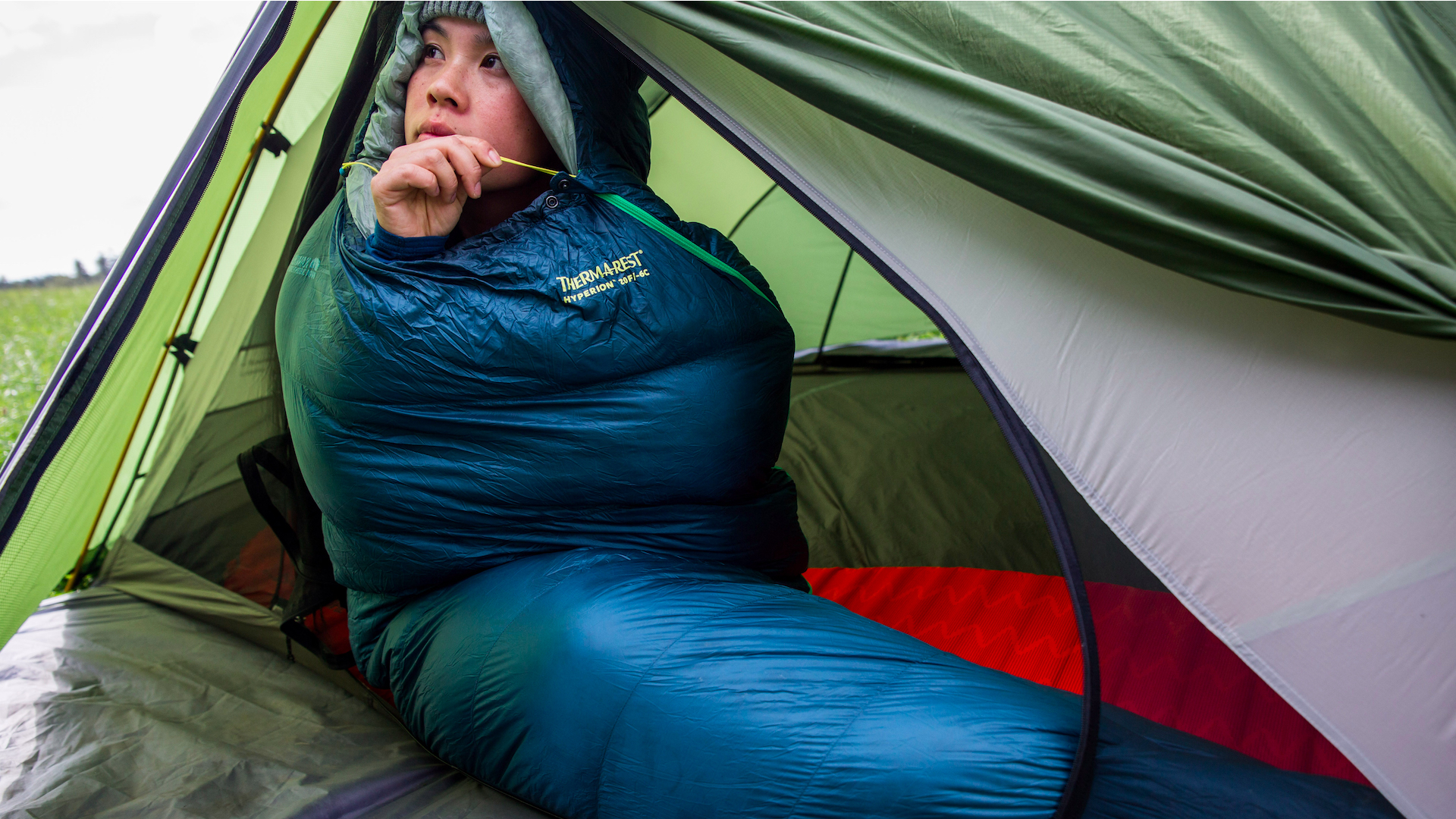
From a sustainability perspective, the Therm-a-Rest Hyperion has Responsible Down Standard Certification, showing that the waterfowl in the down supply chain are treated humanely, and providing a clear link to the source. The PFC-free chemicals used in the DWR process also shows a move towards a more sustainable manufacturing process.
Therm-a-Rest Hyperion: in the field
The Therm-a-Rest Hyperion has a much more accommodating than usual range of sizing profiles, and since I’ve been on the hunt for a sleeping bag for a shorter person (myself), I was interested to try it.
Most sleeping bag manufacturers offer men’s and women’s specific bags in regular, with an XL version (if you’re lucky). Very few seem to offer a smaller version for those who aren’t as tall. As someone who stands 166cm / 5ft 5in, I was curious put the small sleeping bag through its paces.
I tested this bag during a trip to the Dolomites in the shoulder season months.
In the cool valley of Cortina, when the outside temperature during the day was typically around 20°C, there was massive drop at night, to 0°C and below.
Camping comfort can be very personal – some people will sleep warm, whilst others, like me, prefer more insulation. As I sleep very cold, often requiring additional heat sources such as a hot water bottle (yes, really) even in summer conditions, my review will be focused on whether I found the Therm-a-Rest Hyperion to be comfortable as a base camp bag, rather than as a thru-hiking bag.
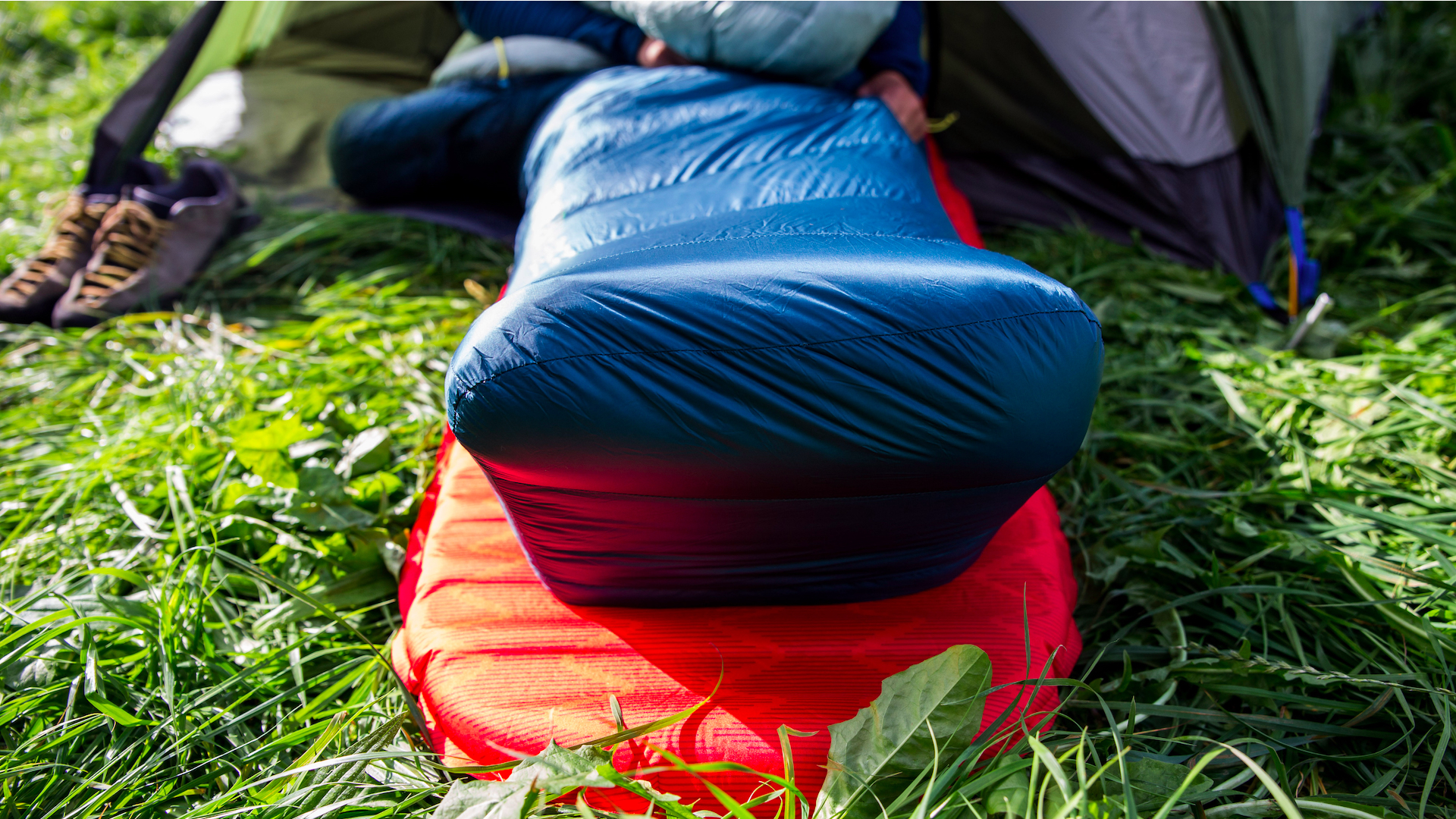
Comfort
The Therm-a-Rest Hyperion uses zoned insulation, distributing the down fill strategically, theoretically where users need it most, with 70% on the top and sides and 30% on the back.
It’s a very personal thing, but I found the design of the sleeping bag’s foot box to be cozy and warm yet too restrictive in the lower half of the design, particularly in the leg area, with a temperamental zip that doesn’t go all the way down. Therm-a-Rest say this is a design consideration to keep the sleeping bag warm with a narrower foot profile, and which also helps to decrease overall weight. As a result, it feels as though this sleeping bag is better suited to side sleepers.
Part of the Hyperion’s design is “Synergy Link connectors”, which allow campers to move freely in their bags without exposing cold spots. The oversized draft tube ensures that heat doesn’t escape out of the top of the bag and allows the head and foot of the bag to rotate 90 degrees in either direction. It does take some getting used to, and I think for back sleepers the design isn’t as useful compared to someone who sleeps on their side.
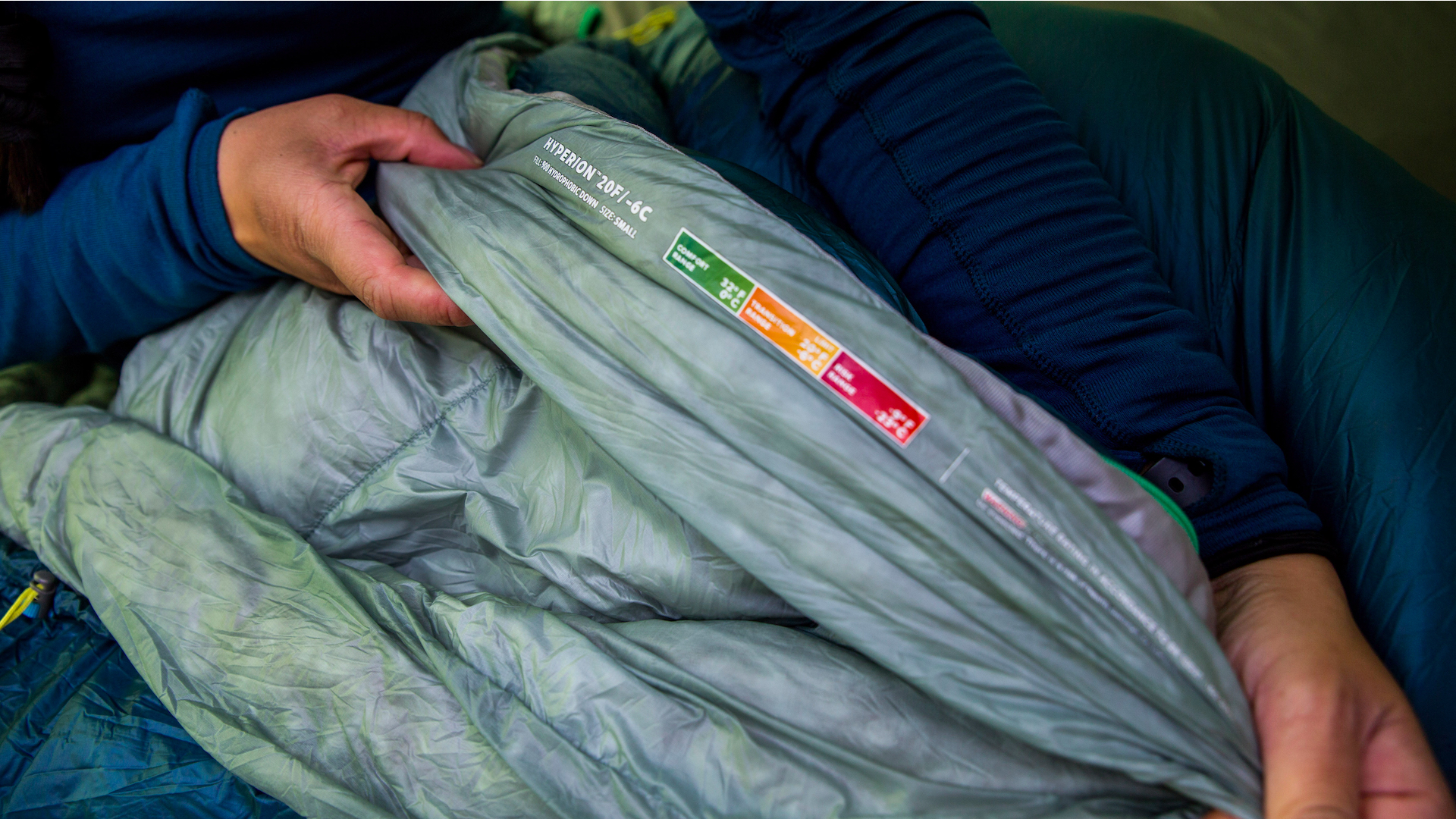
Warmth
As someone who sleeps very cold, I need a sleeping bag to provide warmth and coziness as soon as I get in. While the Therm-a-Rest Hyperion has a comfort rating of 0°C / 32°F, and limit rating of -6°C / 20°F, I found the sleeping bag only kept me comfortably warm to around 3°C, and I would be hesitant to push it to freezing. It actually started to feel cold at 4°C while I was testing it in the Alps.
I used a foam sleeping pad, foam roll mat and a blanket while I was camping in the valley – the air was cold enough for my breath to see in front of me – but I felt that the sleeping bag often felt cold, even though I had my base layers on, plus a long-sleeve fleece top.
As a middle-of-summer sleeping bag for fast and light alpine missions, where the choice is between not taking a sleeping bag at all, or having one that’s the weight of a down jacket – it’s ideal. For off-season valley comfort, however, a slightly warmer bag would be my preference.
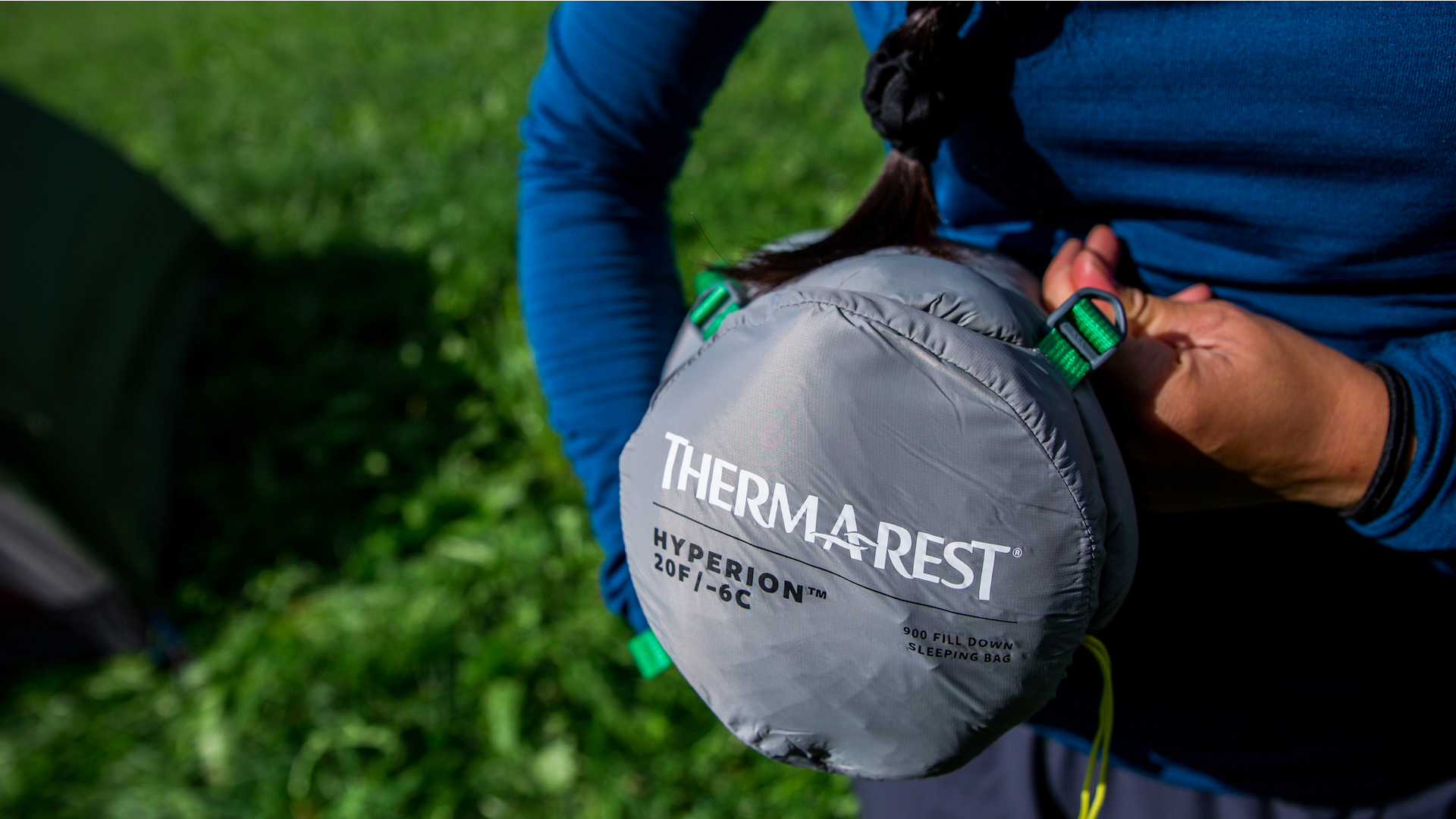
Design
For thru-hikers and alpinists, the Therm-a-Rest Hyperion is brilliant, thanks to its unrivalled packability. The super-lightweight materials and precise design means it can pack down to 15cm x 20cm in a lightweight, gray compression sack. Post-adventure, a cotton lofting sack means it can be easily stored at home to help retain its lofting properties.
The Therm-a-Rest Hyperion sleeping bag is also designed with a “Box Baffled Construction”, which uses mesh walls to maximize loft and minimize cold spots in key areas, whilst the “Comfort Fit” means it is made to be ergonomic in its shape, with a longer zipper that’s more useable than other ultralight bags.
I noticed that the zips were quite fiddly, however, and kept catching on the outer material, which didn't have much protective fabric – a sacrifice in a bid to improve the weight-to-warmth ratio. Personally, I’d opt for a slightly more durable outer fabric.

Size
According to the Therm-a-Rest website, a size “Small” would accommodate a person up to 168cm. Rather than opting for a gender-specific fit, the Hyperion range is unisex, offering three different profiles that give width, height and girth at shoulder, hip and feet, with a lot of detail on numbers to crunch through.
With sleeping bags, a larger fit offers greater freedom to move in, but empty air can create cold spots. The Therm-a-Rest Hyperion, I found, was one of the shortest and narrowest sleeping bags I’ve ever used. This resulted in a warm setup when I got in, but the trade-off was a bit of discomfort as a result of not having enough space to spread out. There is some extra give in the torso areas, however, to allow your shoulders, elbows and hips to move more freely.
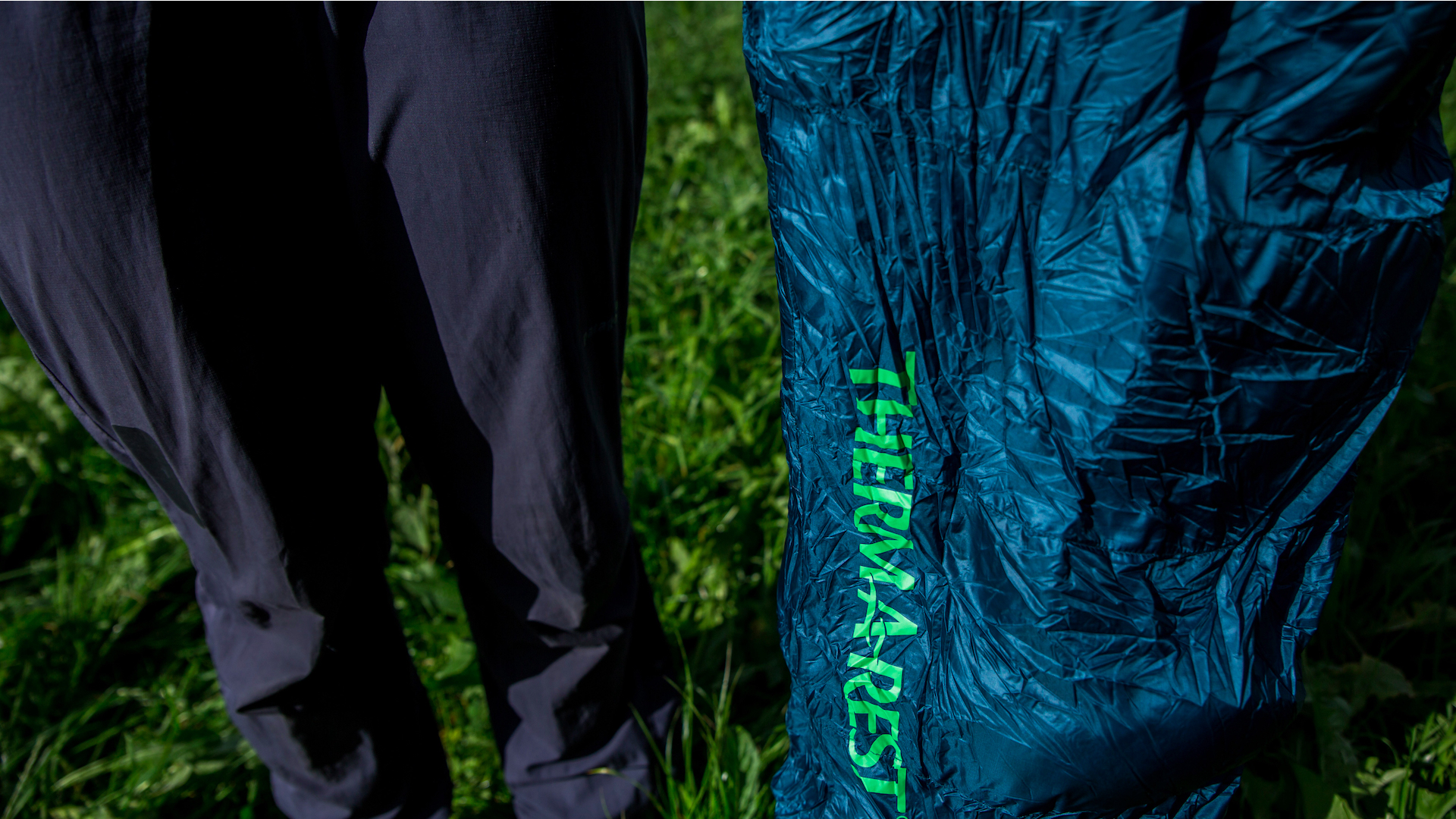
Materials
I was impressed with the materials used. Both the shell and the lining use a premium 10D Nylon Ripstop with DWR coating. Therm-a-Rest have sourced a high-powered, high-performance, RDS-certified down.
The down used in the sleeping bag has also been treated with Nikwax Hydrophobic Down, ensuring the sleeping bag stayed dry and retained loft in cold and wet conditions, which helped provide thermal protection and an additional level of peace of mind.







